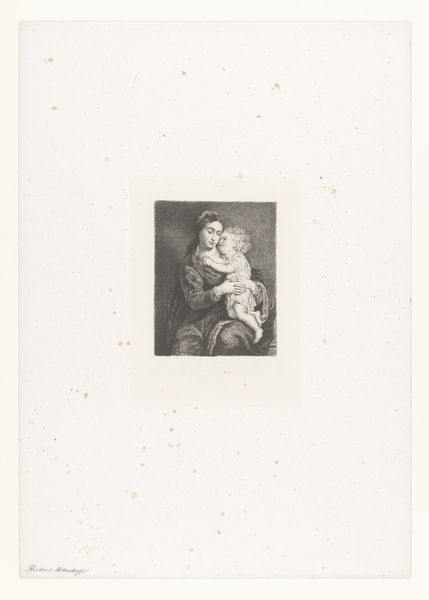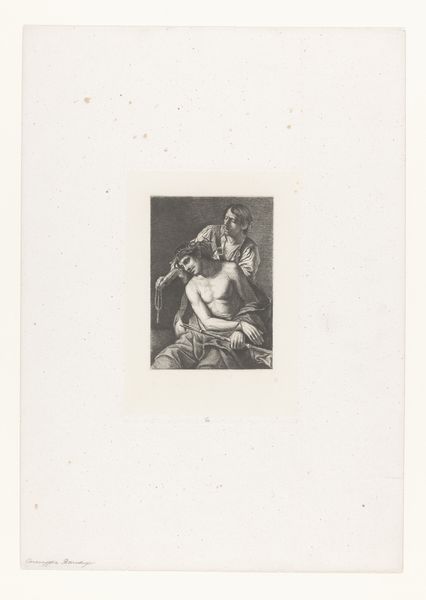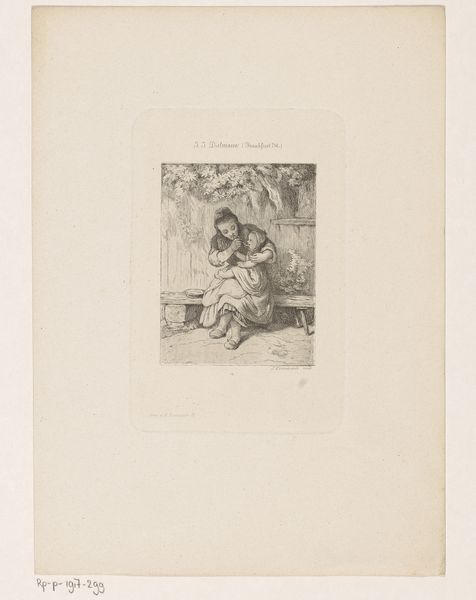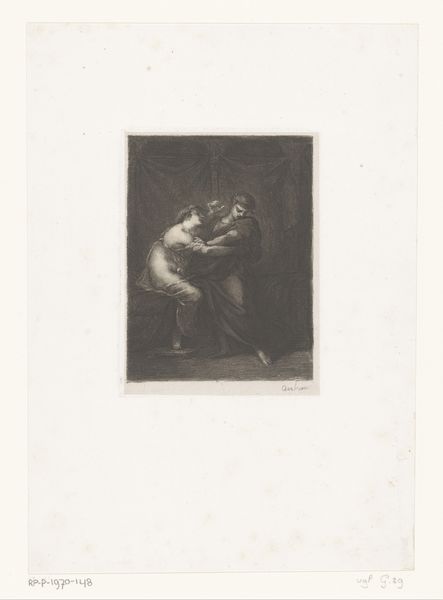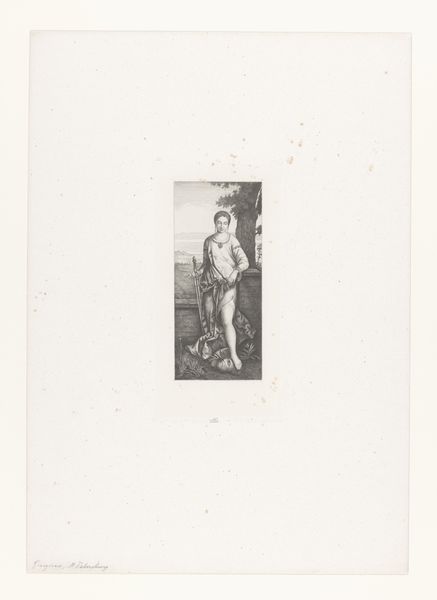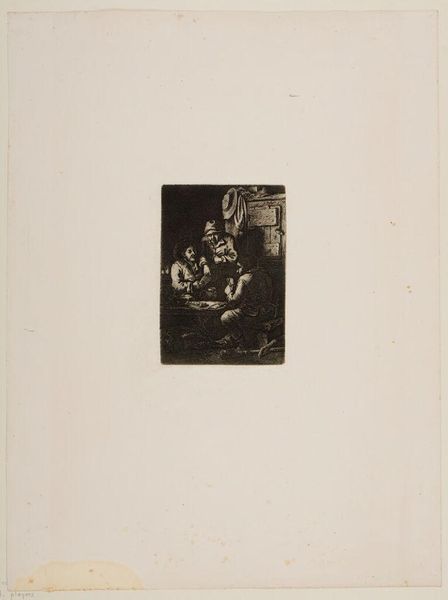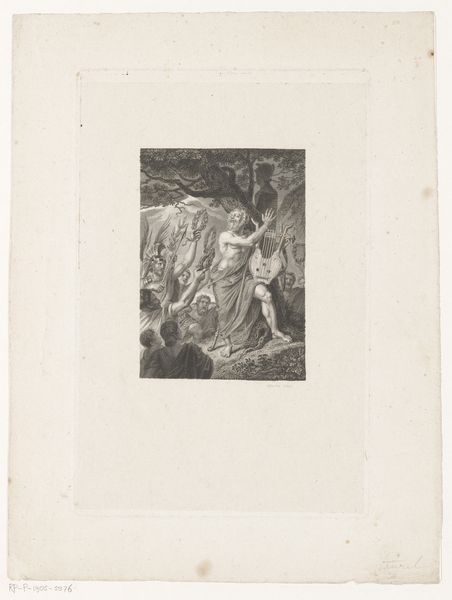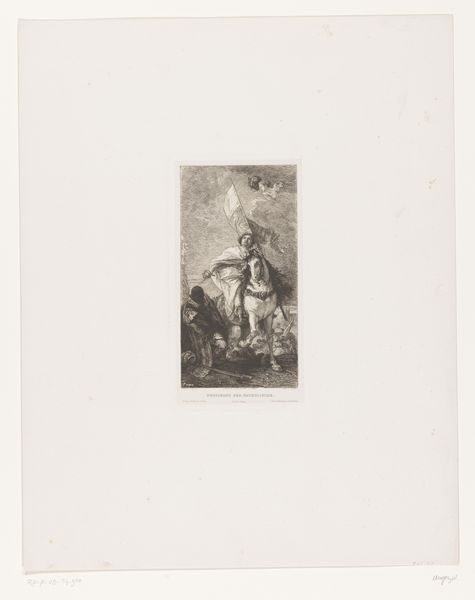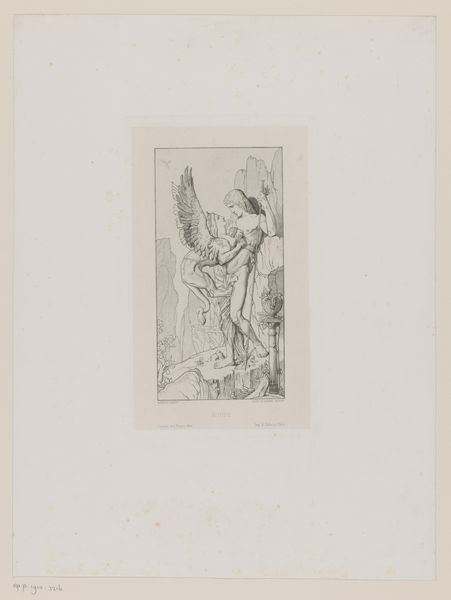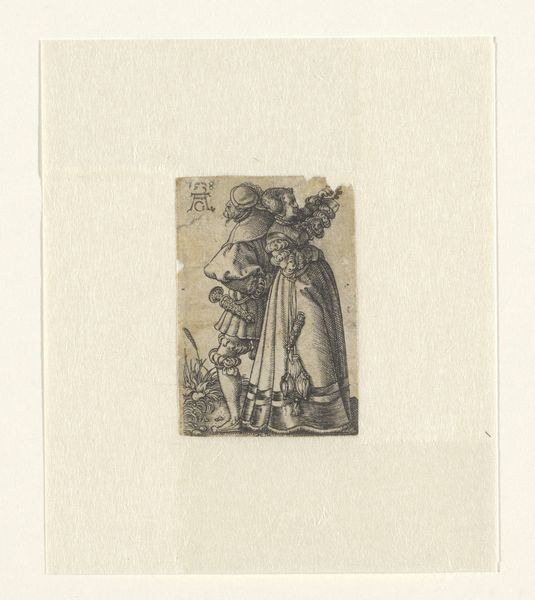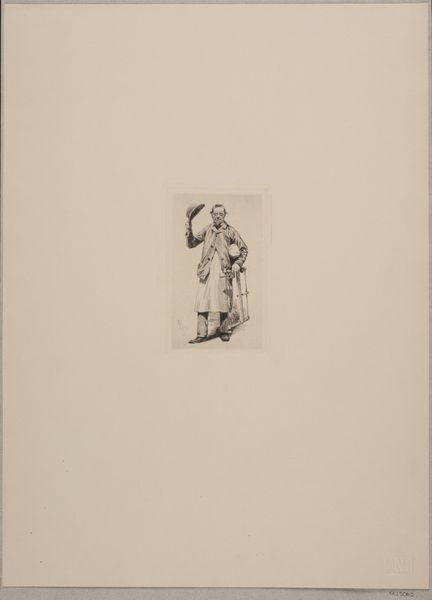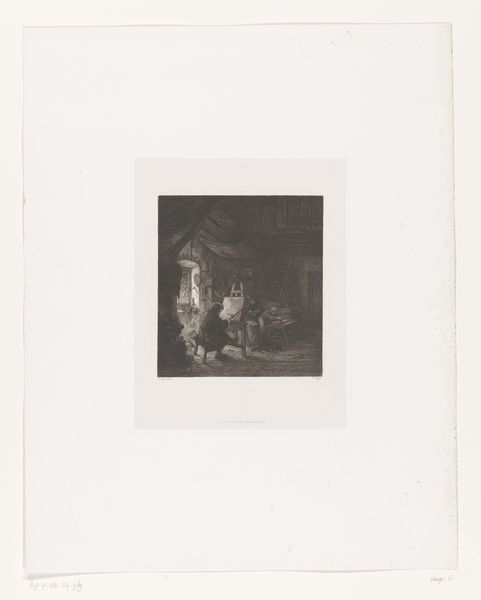
print, paper, engraving
#
portrait
# print
#
figuration
#
paper
#
11_renaissance
#
northern-renaissance
#
engraving
#
miniature
#
monochrome
Dimensions: height 181 mm, width 135 mm
Copyright: Rijks Museum: Open Domain
Curator: This delicate print is titled "Maria geeft Christus de borst," placing us firmly in the realm of devotional imagery. It was created sometime between 1857 and 1914, and its artist is Nikolay Semyonovich Mosolov. Editor: Immediately, the intimate scale and the crisp monochrome capture my attention. It’s almost ghostly, yet grounded by the weight of the paper. I can see it involves some kind of incised material and I wonder about how that influences meaning. Curator: Well, given it is an engraving on paper, that incision becomes pretty important: it isn’t simply a representation but a physical act. It embodies the labour of creating, and the dissemination of religious images to a wider audience becomes almost like mass production even if a careful hand holds each piece. The repetitive action underscores the work. Editor: Absolutely! Each strike becomes an act of devotion itself. You know, considering this piece probably emulates Northern Renaissance artwork. I am interested in knowing the choice to adopt that style so much later, nearly half a millennium after. Curator: A delicious observation! Mosolov’s appropriation makes one think about how artistic traditions and styles persist—echoing through time. You know, the use of engraving speaks of craft, patience, the act of carefully inscribing each detail with the needle… almost meditation itself. But there is this undeniable melancholy about the scene, don’t you think? Is it perhaps this very human element, devoid of much glory? The raw depiction of feeding… Editor: The labor! It brings down this icon to ground zero. That unromantic practicality in depicting the scene might be its boldest quality. So often these depictions focus on some kind of angelic radiance. Curator: It’s a stark image in a way – literally. The pure lines against that crisp white field… But perhaps its power lies exactly in that intimacy, offering us not divinity on high, but humanity nurtured, cared for and in such detail crafted by hands, as opposed to divine decree. Editor: And it is that crafted touch, those delicate lines born of meticulous labour, which make the ordinary—this quiet moment of feeding—extraordinary. Thank you for bringing this lovely piece to my attention! Curator: My pleasure. And to you, listener, I hope this offered new facets to behold.
Comments
No comments
Be the first to comment and join the conversation on the ultimate creative platform.
